
自由撰稿、活动策划、摄影。关注性别、亚文化、当代艺术、心理学与灵性等话题。 个人网站:www.siqi.love
June in Shichahai: Front Sea, Back Sea, Flower Sea, Fence Sea
This is a record of Beijing in June. The original text was published on the WeChat public account "Problem Youth Wonderers" . Thank you Yang Shao for editing.
Photography and writing: siqi
Edit: Yang Shao
01 Lotus Market: Kites rising from the fence
On June 9th, I was wandering nearby after the control area not far away had just been unsealed. On this day, the isolation device in the Bell and Drum Tower Square has been dismantled, but a confirmed case related to "Paradise Supermarket" appeared in the alley next to Shichahai, and the containment measures were escalated again.
I walked all the way from Di'anmenwai Street to the lotus market at the southernmost end of Shichahai. On the small square next to the Shichahai subway station entrance, dozens of temporary public toilets are usually arranged in formation. Once any hutong is included in the closed area or controlled area, they will be recruited immediately. A section of the sidewalk along the lake near the Wanning Bridge was closed, even though there were no residents living there. Several fitness equipments were subsequently isolated from the range of residents' activities and turned into redundant facilities. I can still see the residents who were sealed inside walking on the Jinding Bridge, surrounded by lake water and trees like a stage.
The small square in front of the lotus market once gathered a lot of people dancing and playing badminton, but now it has been occupied by countless fences. They are sandwiched between the calm Qianhai and the blooming sea of flowers, like another stronger, spreading "sea" that will drown pedestrians. "Do not enter the nucleic acid site" was posted on some fences, but I did not see the nucleic acid booth. It may have been there and is now gone.
In the next few days, I would walk along this route and take photos from time to time. Every landscape is changing. In some places, the barbed wire fence was replaced by a stronger iron sheet the next day. The fence on the lotus square can also see some signs of being moved.
It is difficult for me to define the attributes of these facilities. Most of them are idle, so they don't really exist for the sake of isolation and order. Their appearance is not only like a warning before a certain crisis comes—like the high tide warnings in coastal cities; it also looks like ruins after a crisis, reminding people not to forget history.
So really, where are we in crisis?
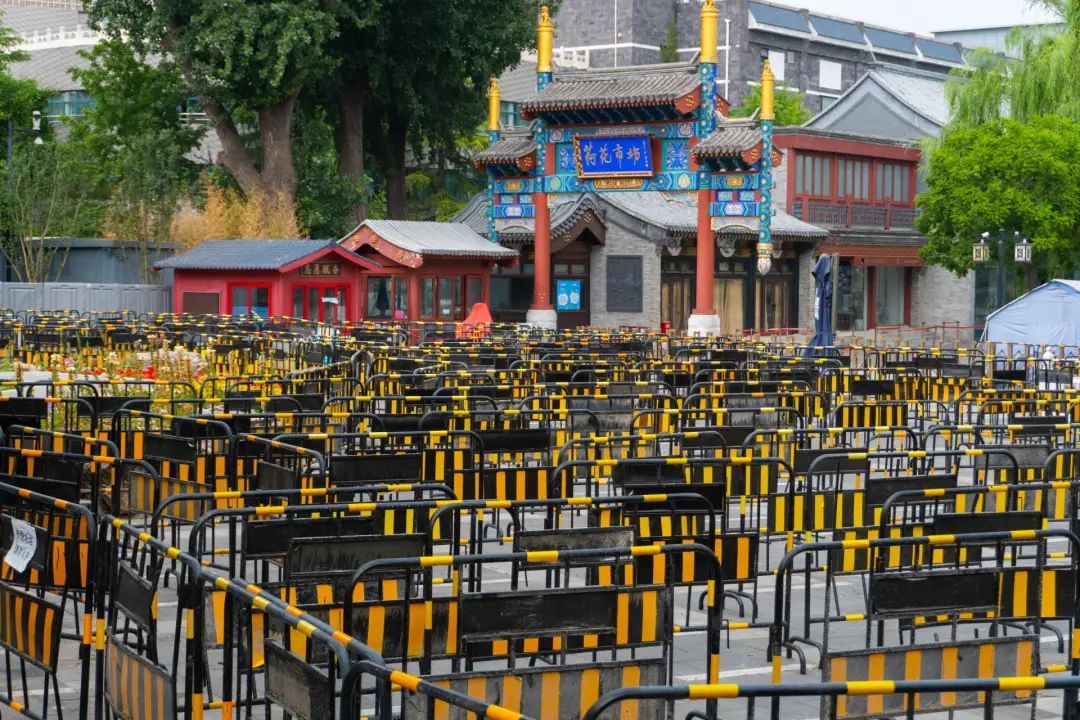

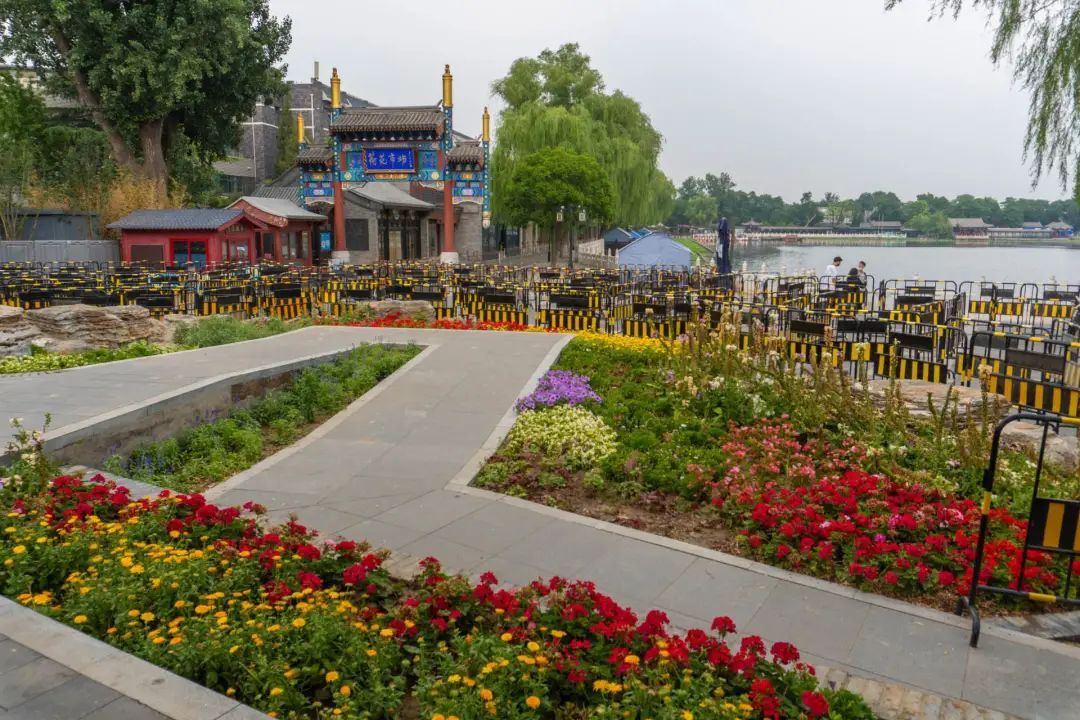
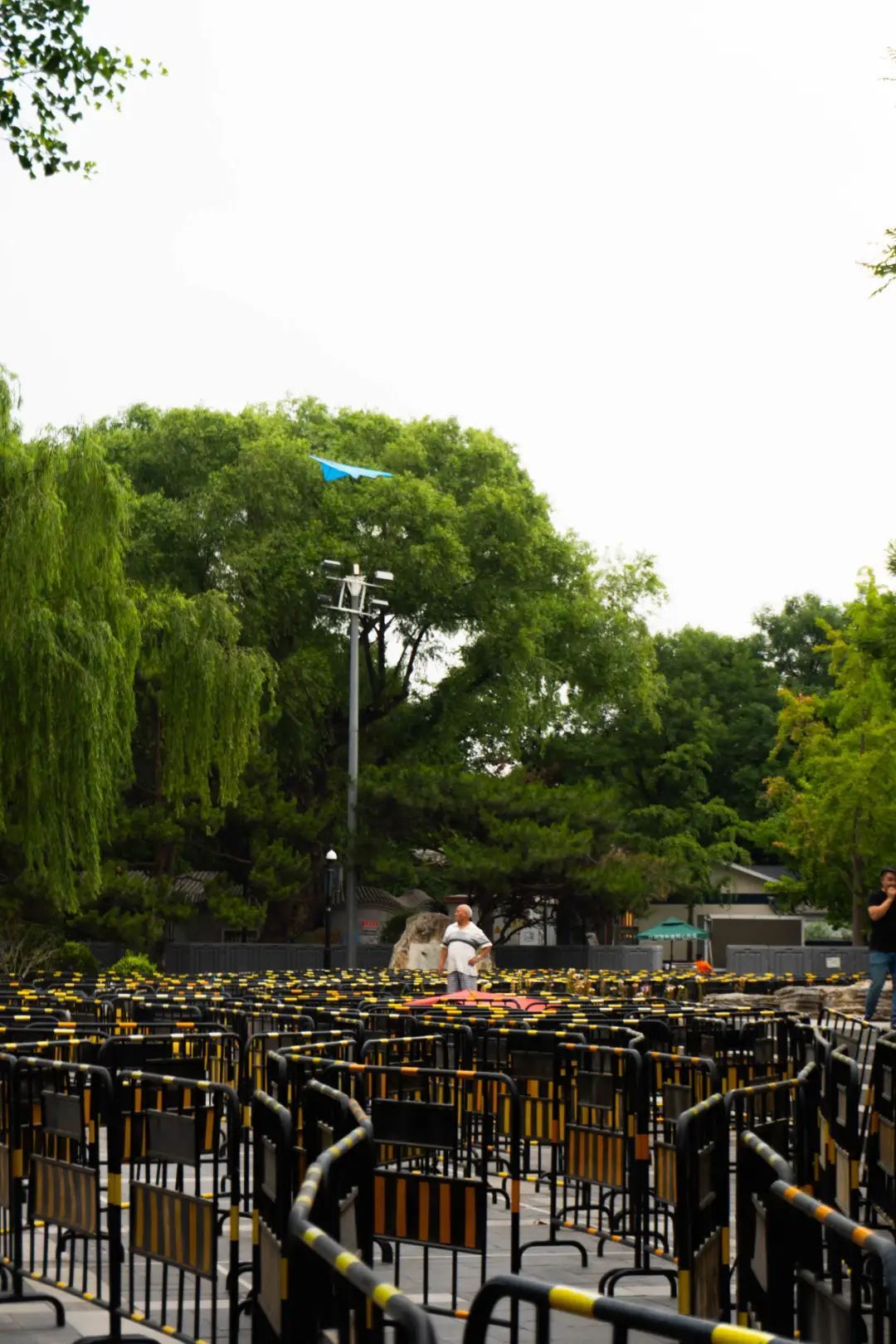
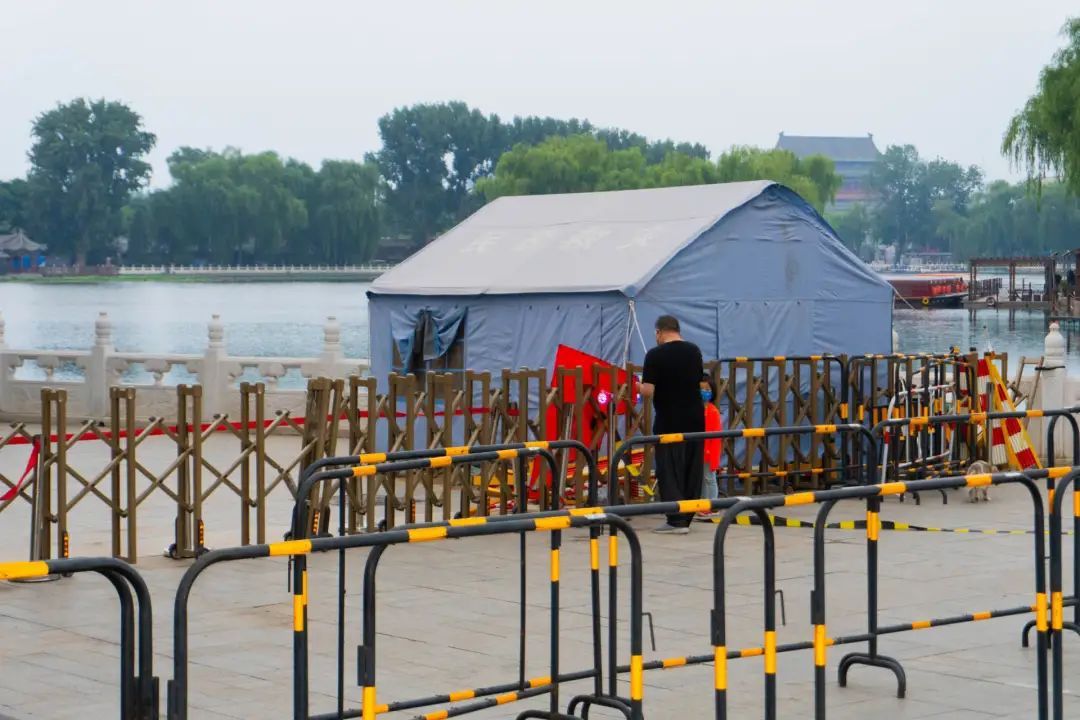


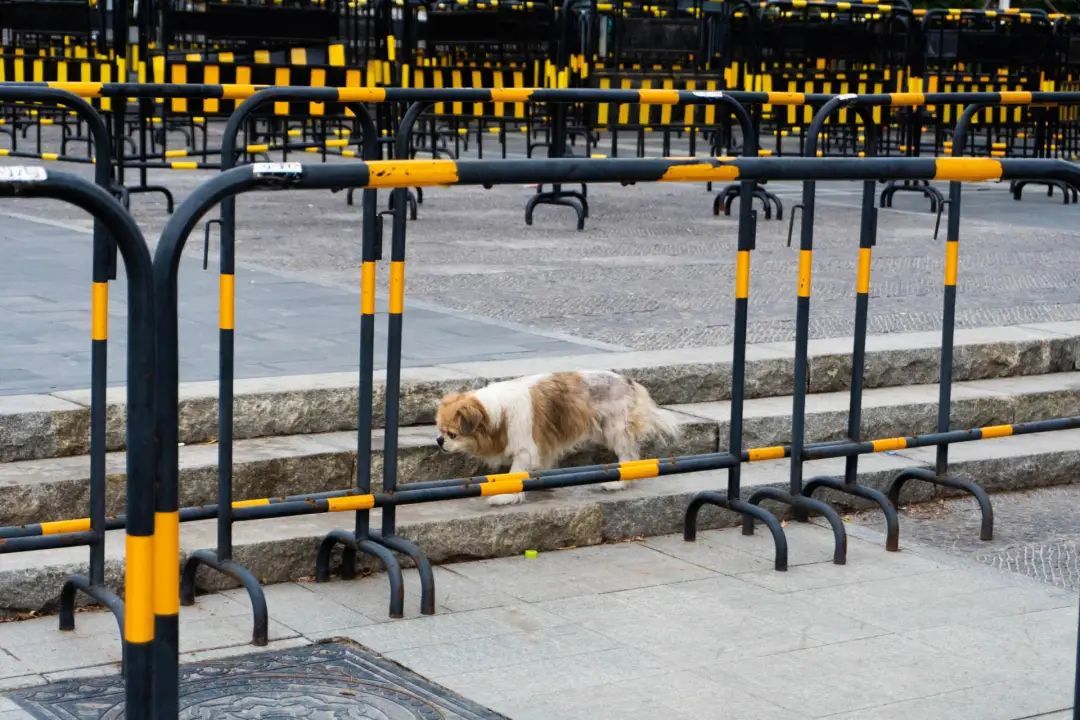


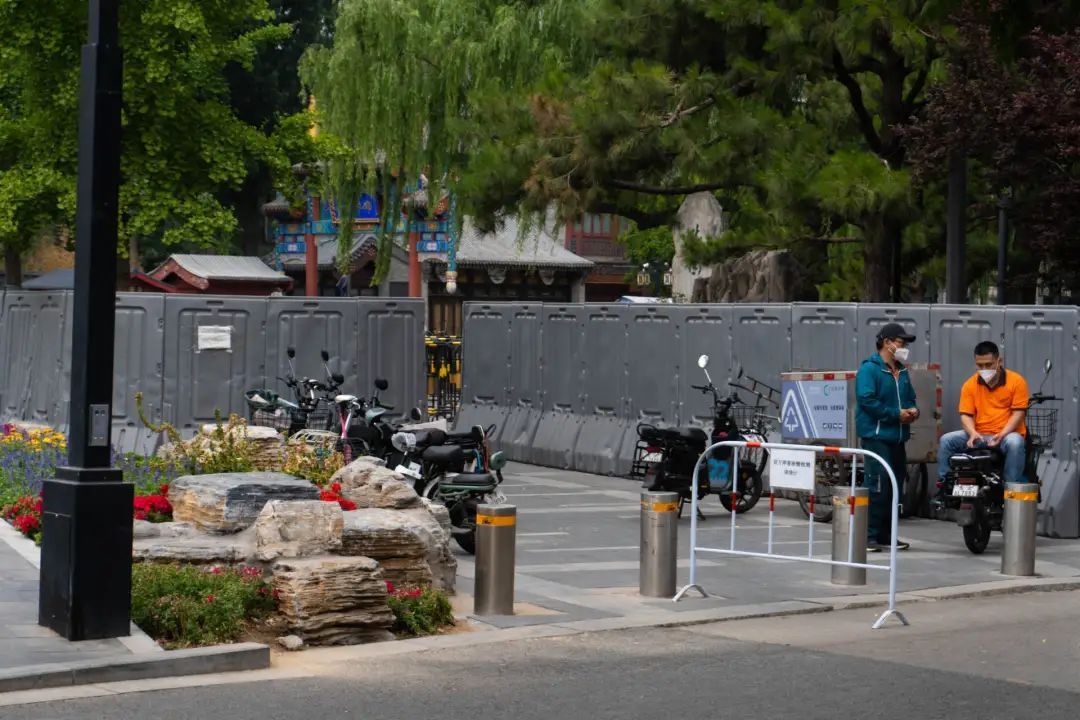
02 The protected central axis
"Central axis," I know you hear that word in a lot of places, but what does it really mean? "Center," "soul and spine," "order," "hierarchy," these are the words that most often appear with it in history books. In the era of the epidemic, the "central axis" means the area that needs to be protected the most, without any abnormalities.
Shichahai includes Qianhai, Houhai, and Xihai (Jishuitan). When Dadu was built in the early Yuan Dynasty, the site was selected on the shore of Shichahai, so there was a saying that "there was Shichahai first, and then there was Beijing City". The "Wanning Bridge" built in the Yuan Dynasty is located just to the east of Qianhai, south of Drum Tower, and north of Di'anmen. It is known as "the first bridge on the central axis". During the Ming and Qing Dynasties, the Bell and Drum Tower was the northernmost starting point of the central axis.
"Shichahai is along the Huhe River, west of Di'anmen, and the lotus is the most abundant. Every June, ladies and gentlemen gather, but they are all on the north bank of Qianhai... It is called Qianhai, or the so-called Lotus Paozi... The scenery along the north bank is the best, with green willows hanging down, and red clothes and powder."
——Records of "Yanjing Sui Shi Ji" published in the 32nd year of Guangxu in Qing Dynasty (1906)
Before May, you can see in many travel guides that Shichahai is "the only scenic spot with open water in Beijing" and "the only park in Beijing without walls". But these days, if you want to get closer to the water, you have to use some unconventional means. For example, take a long way around, scan the code to enter the alley that has never been completely closed, and then pass through the small alley that only those who have lived in will be familiar with, to reach the limited water area, or find a high place to overlook.


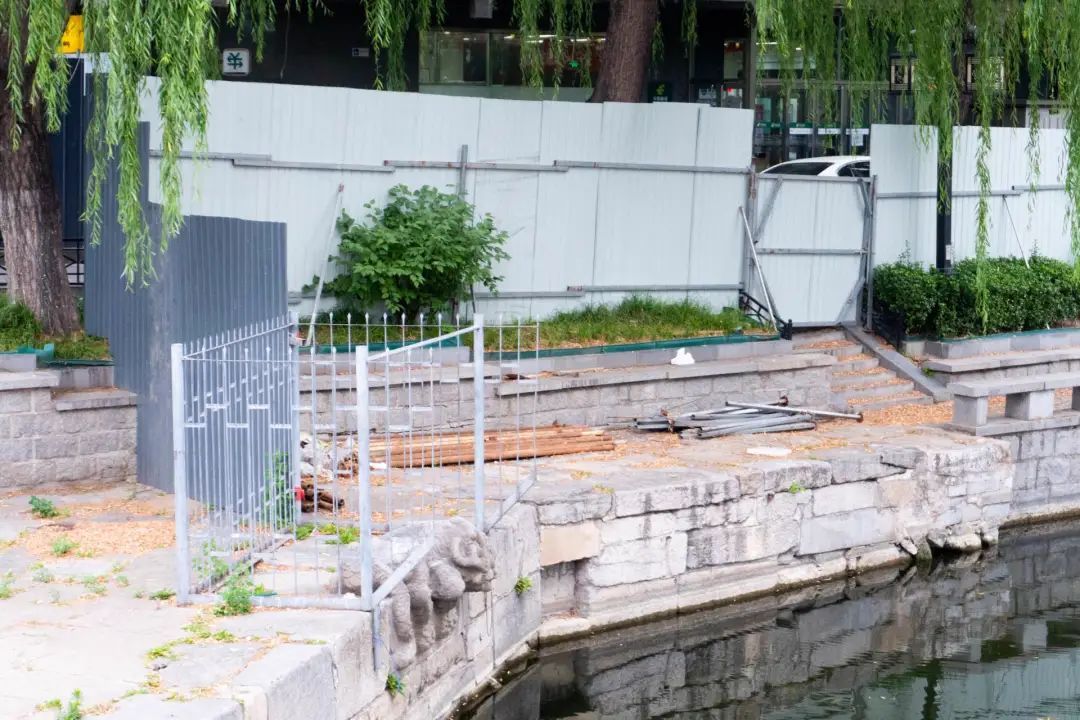
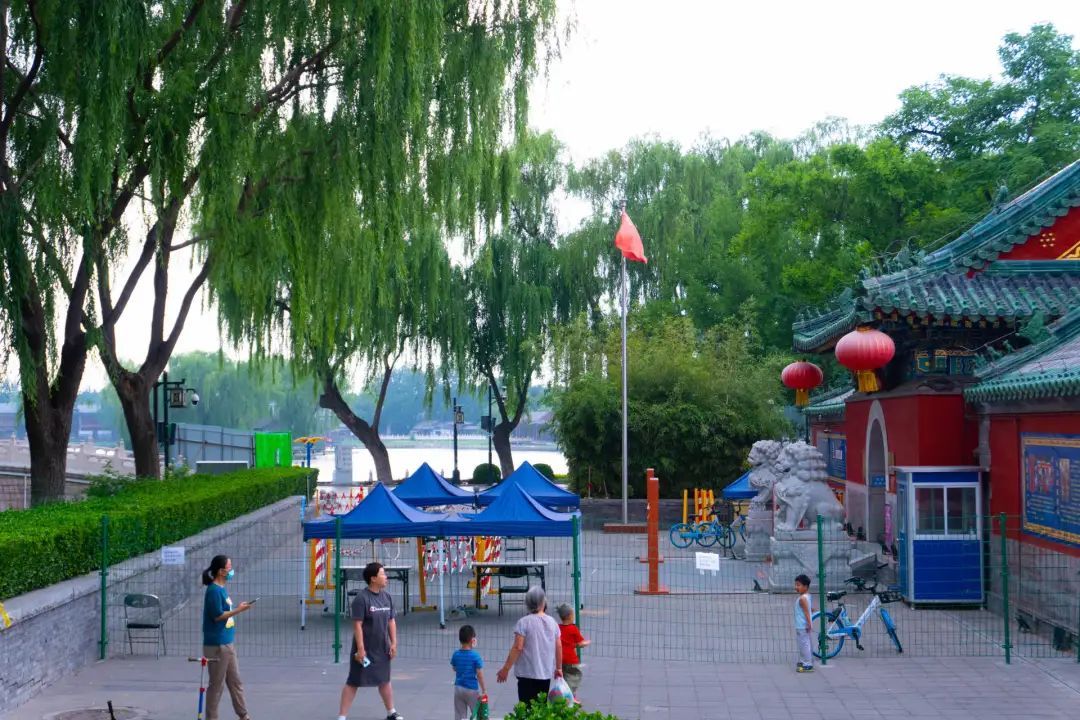
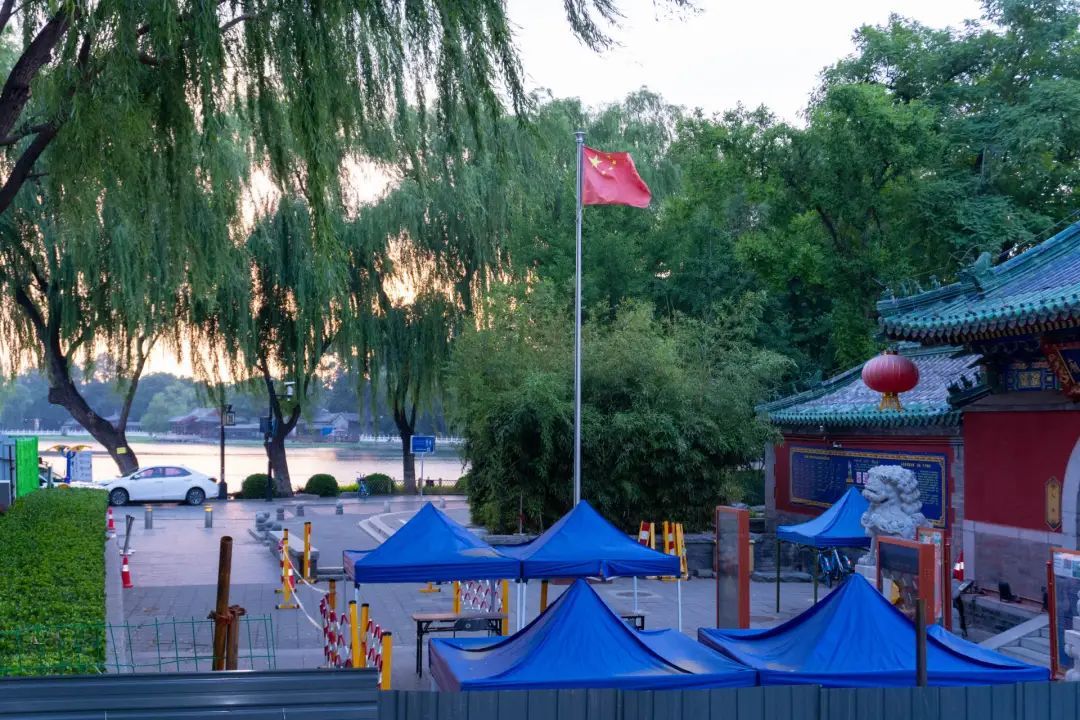
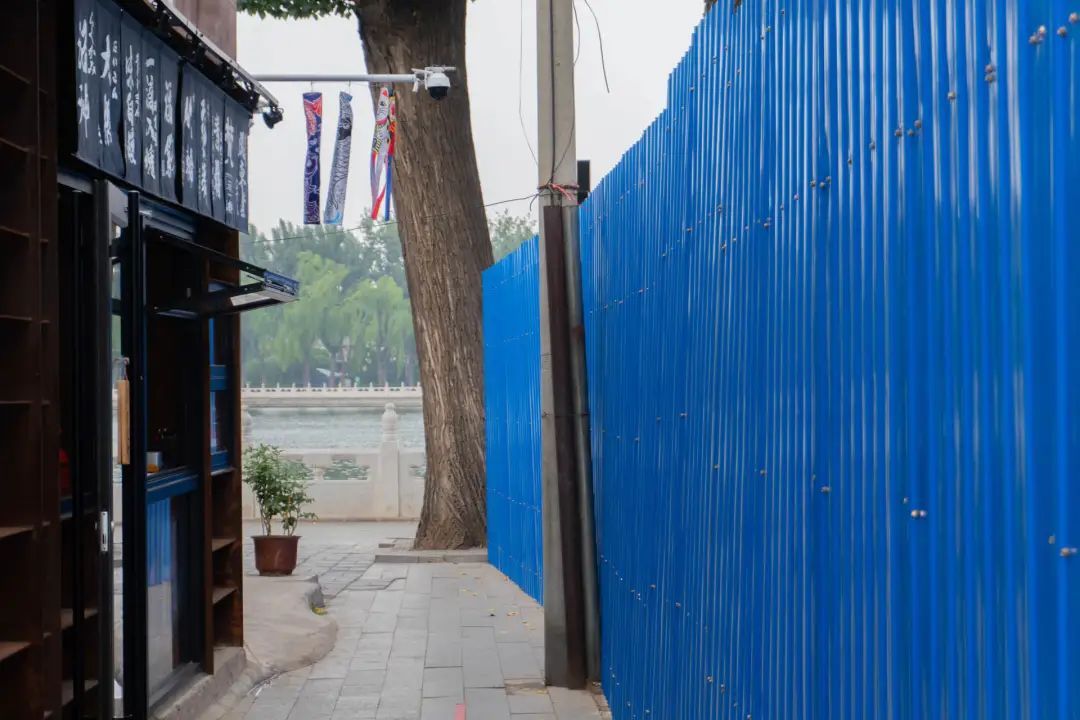
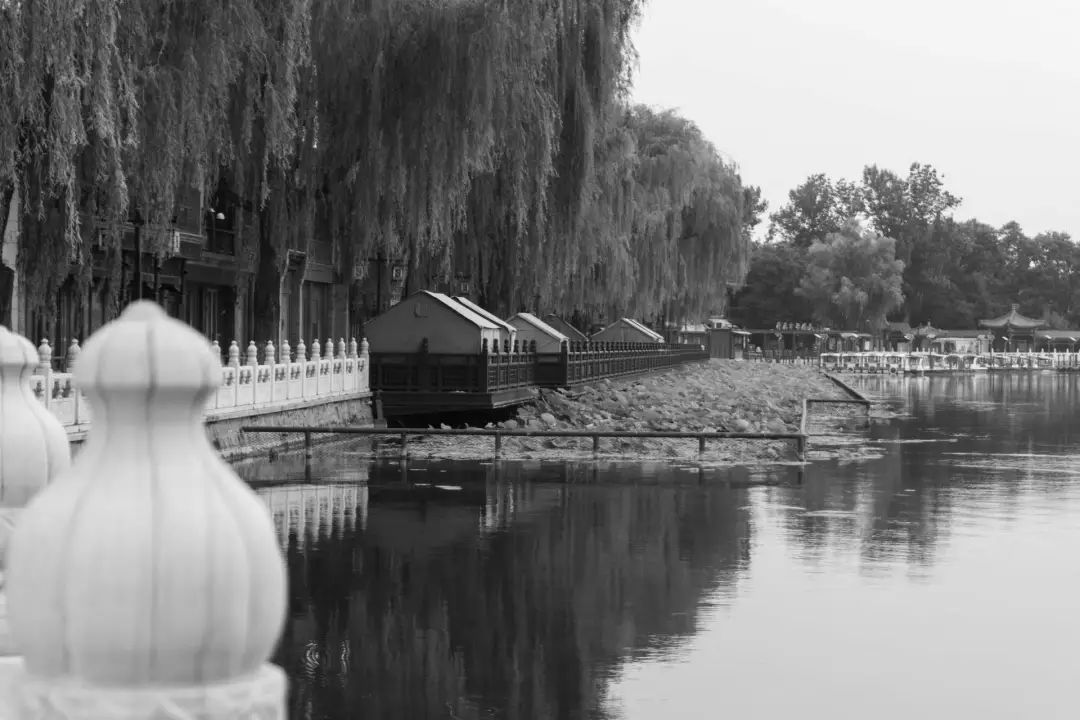
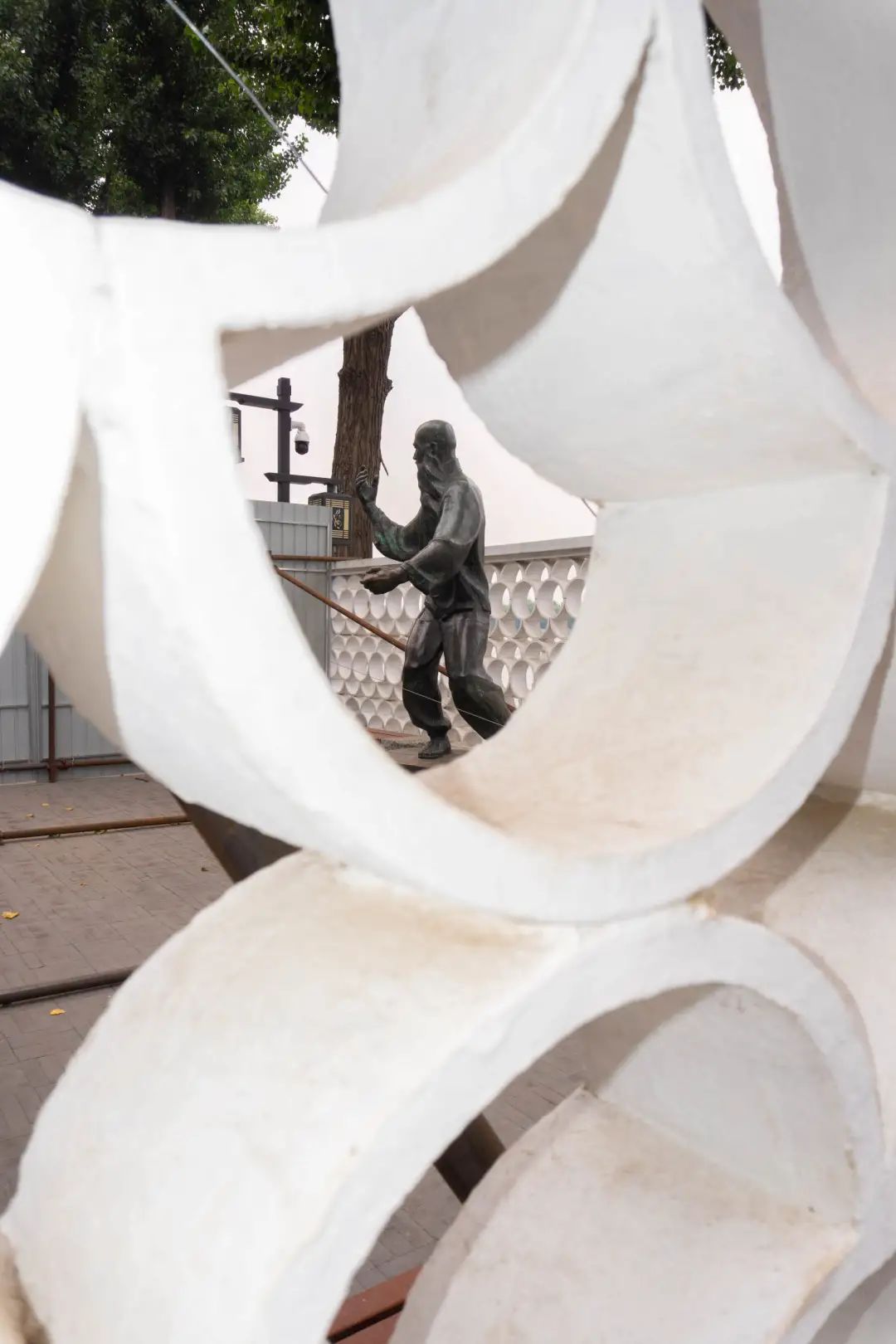
03 Living with the Fence
Photographer John Michael Kilbane once took a group of photos called "hostile architecture" in Manhattan. These facilities exist because of people's leisure needs in public areas, but deliberately create obstacles to prevent people from being too leisurely.
For example, the handrails of the park benches in the middle are to prevent homeless people from sleeping here; the sharp-shaped fences beside the flower beds are to prevent leaning; the additional protrusions on the steps are to prevent people from playing skateboards; The narrow strip-shaped seats in railway stations and subway stations are to prevent people from sitting for a long time; large stones are piled up under the bridge openings to prevent the gathering of homeless people.
Cara Chellew, founder of the Defensive Urban Design Research Network at the University of York and public space project Mapping DefensiveTO, calls this type of building "defensive design" and divides it into defensive designs. Seats, raised steps, barriers such as fences, uneven surfaces, monitoring facilities, uncomfortable light and noise, public spaces lacking benches and toilets are seven categories.
In a TED talk, Cara mentioned that the appearance of these "hostile buildings" has prevented some deliberate vandalism of public facilities to a certain extent, and at the same time is sending a signal-you are not welcome here . Whether implicit or explicit, defensive design is a form of urban scrutiny. The people we see in public places shape our perception of who is part of the public.
The answer to "who is part of the public" is always fluid. While obstacles are real, we can still use them creatively.
The fence next to Wanning Bridge is green with fake grass glued on it, and the outer wall of Huodezhenjun Temple next to it is red. This combination makes this scene look like a carefully arranged theater. The edges of several flower beds here have been built with iron sheets, leaving only a small square where you can move freely. Soon, people began to hang clothes on the iron sheet and play basketball, and the long strip of open space became a track for children to compete.
No one can live without sunlight. The old lady in a wheelchair would look at the ancient building pavilion on the opposite pier under the temporary pavilion used for "emergency disaster relief" on the Houhai side. On the lakeside that is more and more tightly surrounded, old men can always find new fishing spots-although no matter where, there are not many fish to catch. There are always people flying kites in the maze-like enclosure of the lotus market. The old people who originally sang opera in the square will move to the side alley to continue singing.
We will not stay away from public life. Because public life is not endowed by anyone, but a necessity that a city citizen should enjoy.
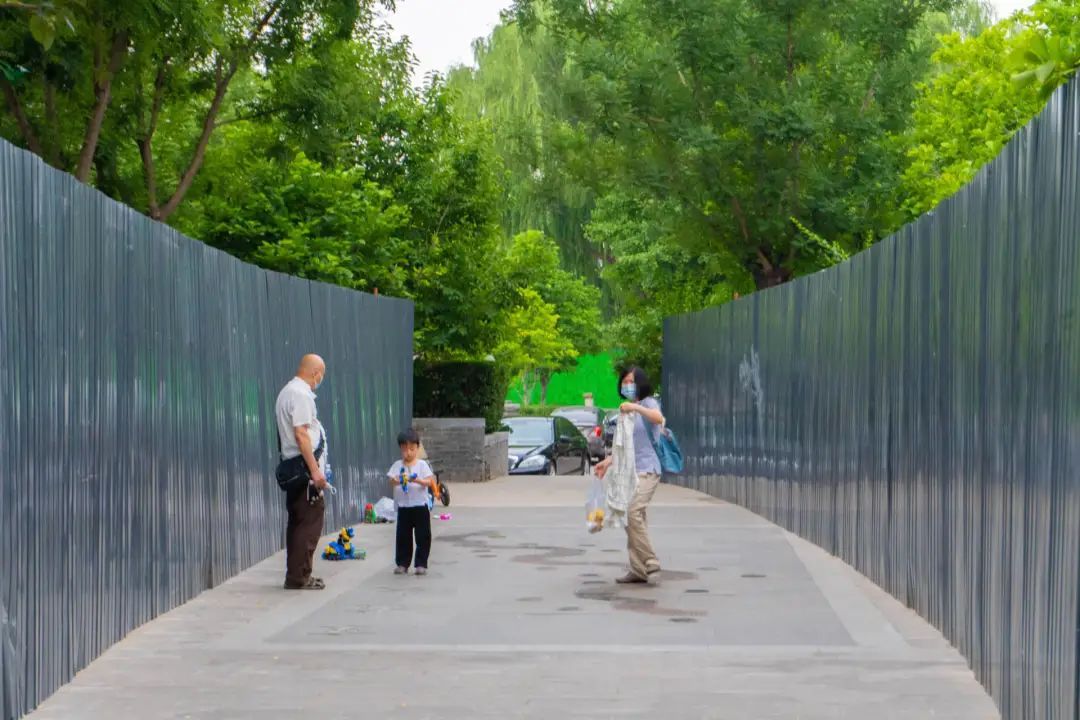

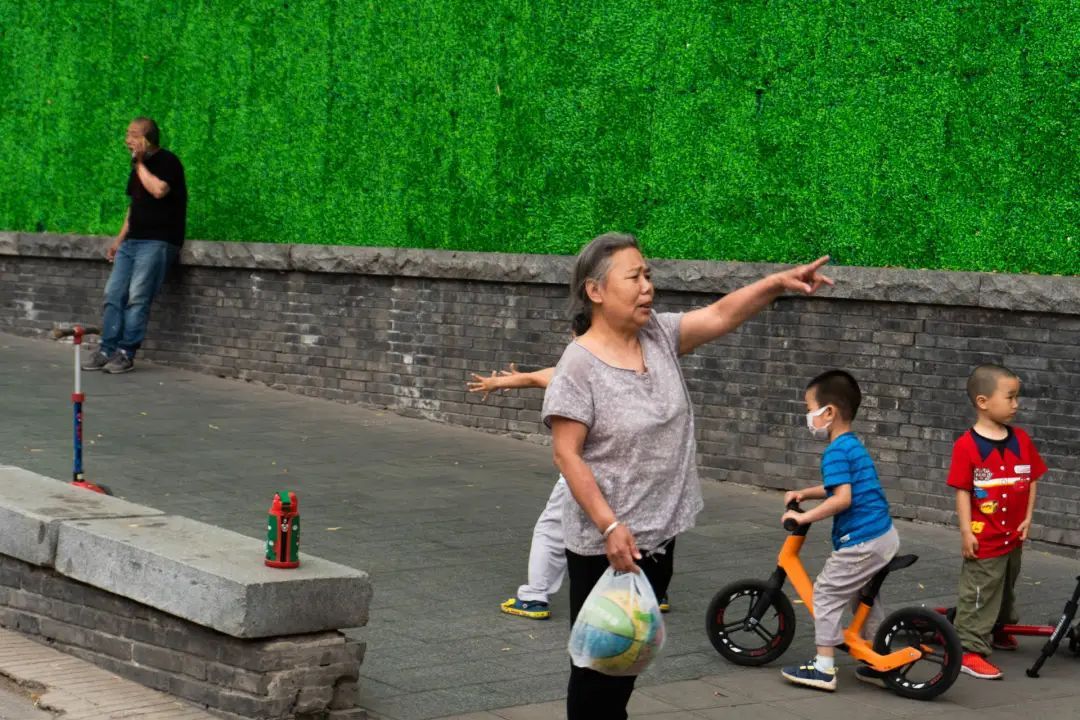
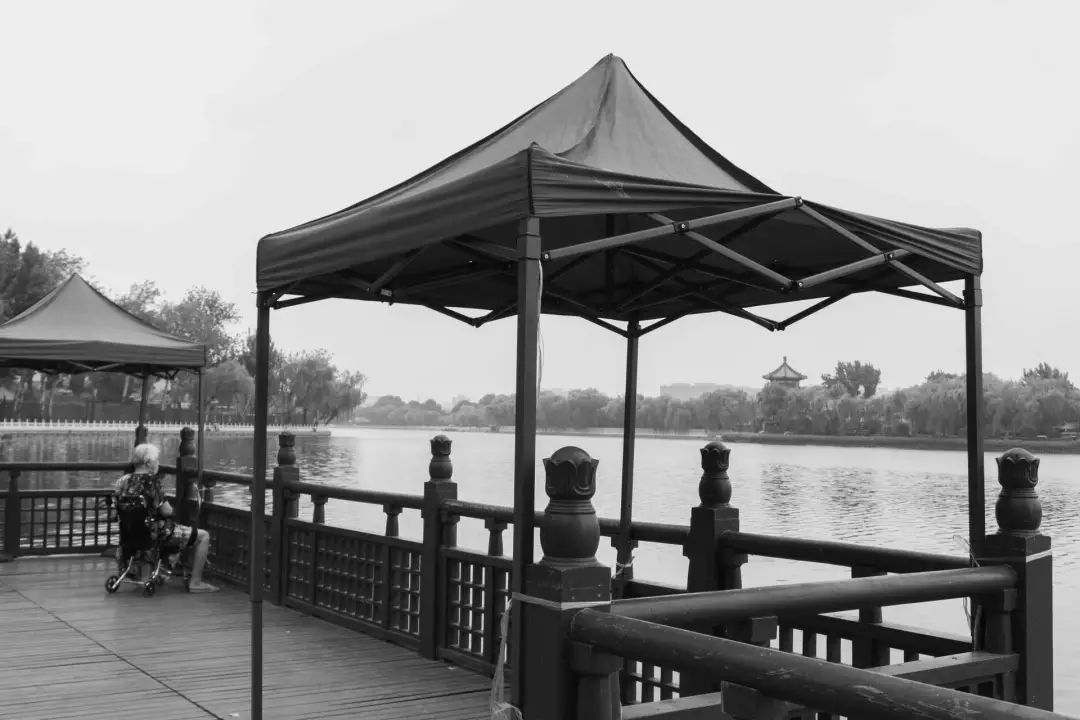

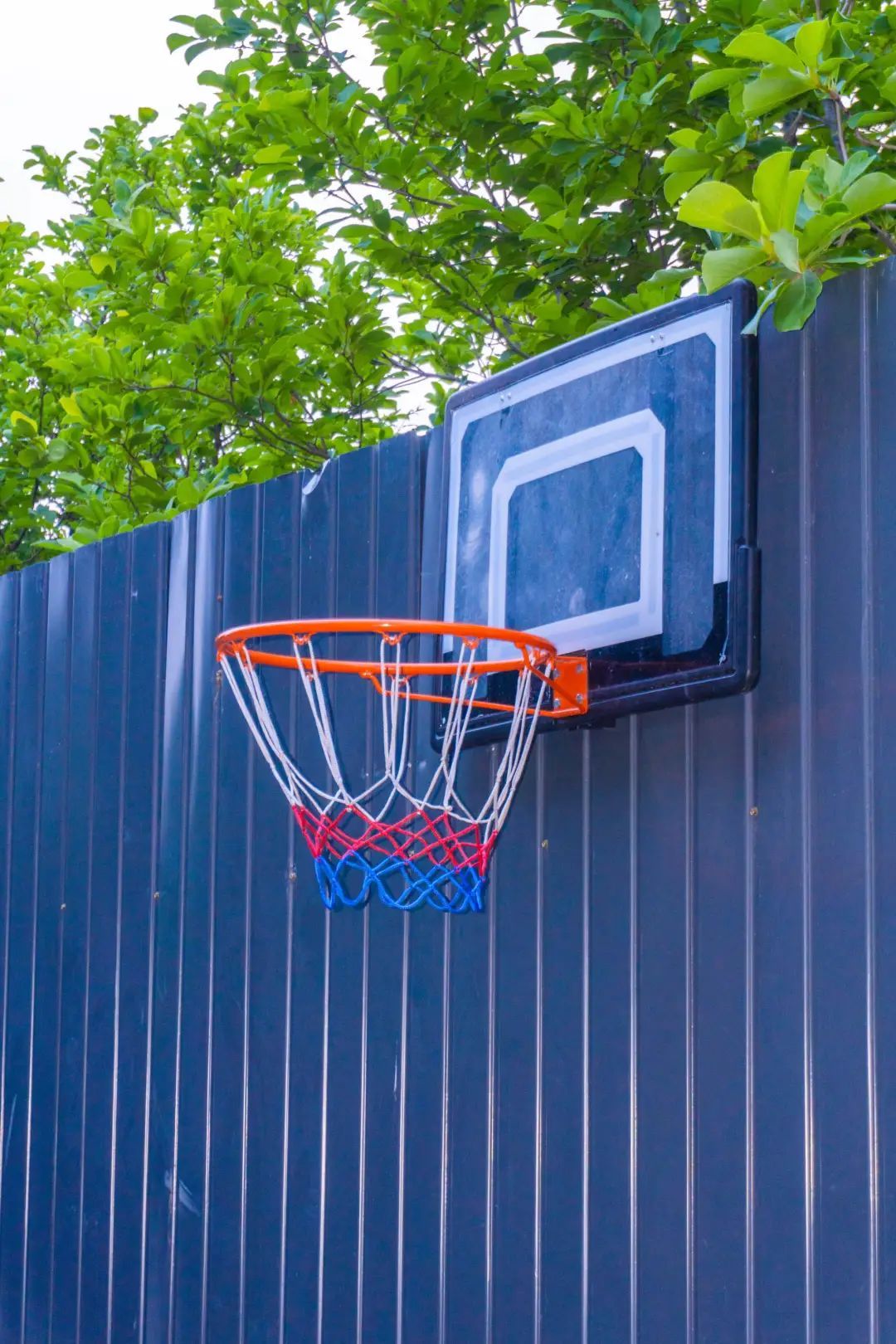
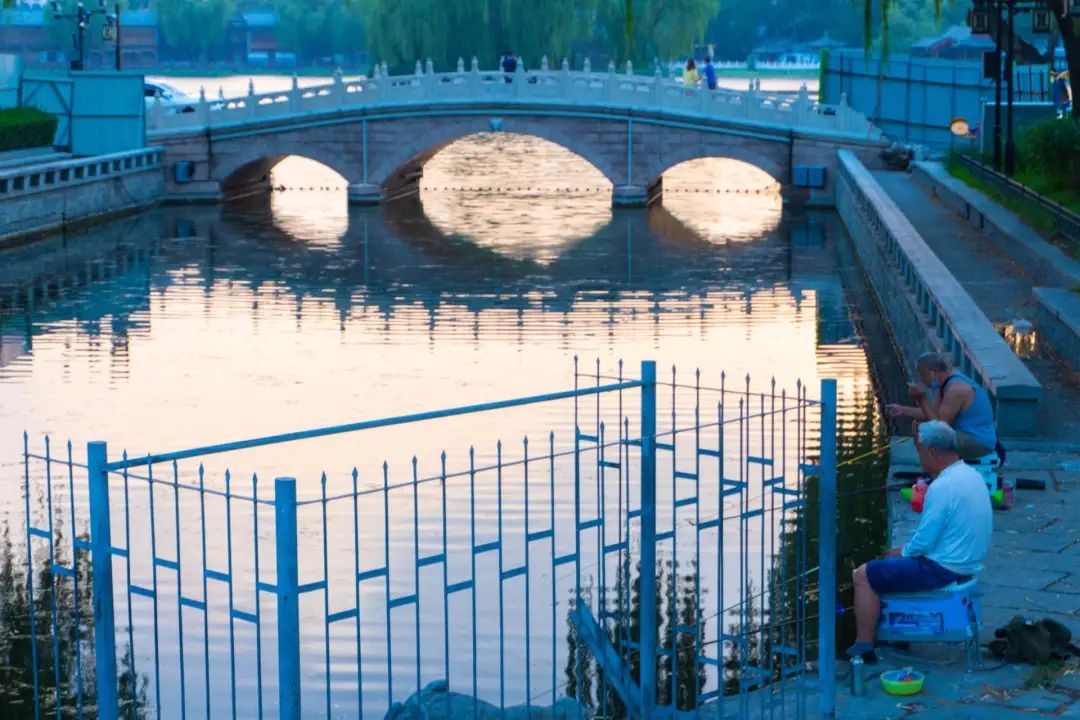



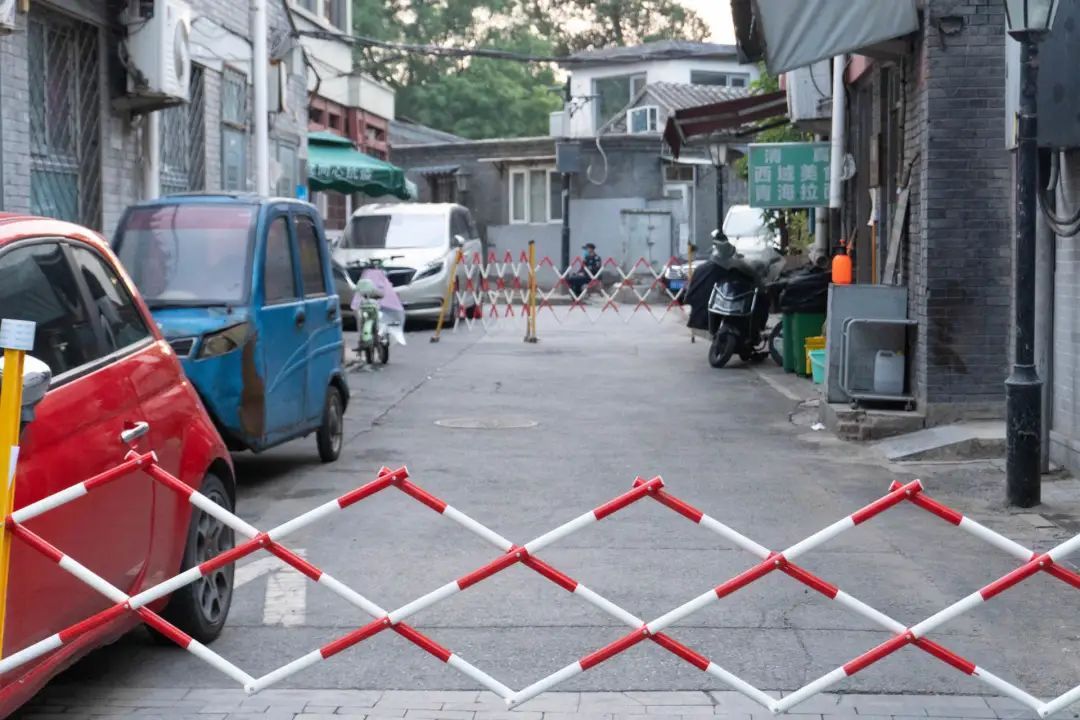
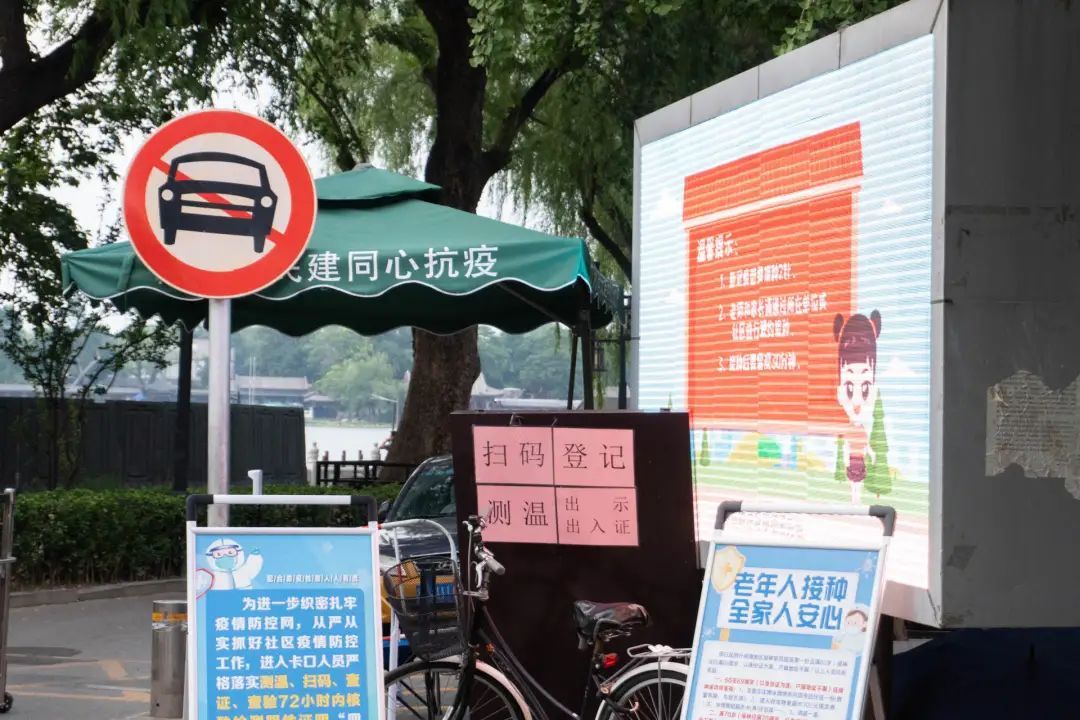


References:
[1] Urban design full of "hostility":
https://www.jiemian.com/article/2670644.html?
[2] Defensive design:
https://www.defensiveto.com/typology?
[3] TED talk by Cara Chellew:
Like my work?
Don't forget to support or like, so I know you are with me..
Comment…